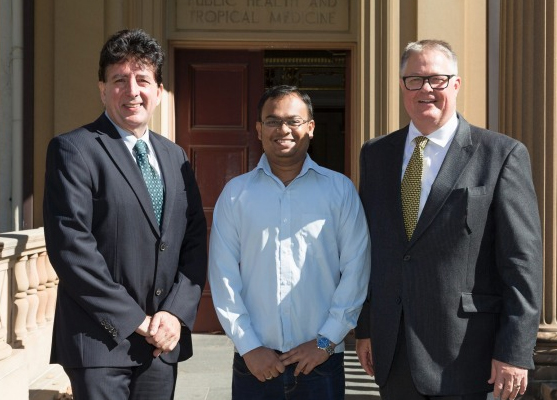Sydney Uni breakthrough against bacterial killer, biofilm, gets $3.5m
A bacterial scourge which forces 4 per cent of diabetics to get a leg amputated is the target of a partnership between the University of Sydney, where a lab has already found a way to kill it, and a Hunter Valley-based manufacturer of disinfectants.
The $3.5 million, four-year partnership aims to produce treatments for infections caused by biofilm, a slimy matrix of sugars and DNA in which bacteria can hide and grow more resistant to antibiotics.
Biofilms are thought to cause up to 80 per cent of all microbial infections, and are a major cause of death for sufferers of diabetic leg wounds, cystic fibrosis, chronic urinary tract infections and burns victims.
The lead investor in the partnership is Whiteley Corporation, an 85-year-old family business whose factory employs around 100 people at Tomago in NSW. It is also backed by the Innovative Manufacturing Cooperative Research Centre.
Whiteley already counts a remover of biofilm from dry surfaces among its range of medical and industrial cleaning and sterilisation products. However this partnership aims to commercialise a breakthrough from the University of Sydney’s school of infectious diseases and immunology, where the biofilm matrix has been broken down in the lab so that antibiotics can kill the bacteria inside.
“In a biofilm, these bacteria are 200 times more resistant to antibiotics than on their own,” Whiteley Corporation chief executive Dr Greg Whiteley told The Australian Financial Review.
“They gain resistance and virulence by essentially ‘talking’ to the multiple other types of bacteria in there. So by unpacking the biofilm, we’ll not only allow antibiotics to work and get rid of infections for sufferers of conditions that are vulnerable to them, we’ll also help address the global problem of declining effectiveness of antibiotics.”
Combination therapy
Invented by University of Sydney researchers Dr Jim Manos and Dr Theerthankar Das, the three-part treatment works to stop biofilm forming by preventing DNA linking up with a particular molecule produced by bacteria.
The ingredients found in what Dr Manos called a “combination therapy” were all found in living tissue, and had been shown to restore damaged cells, he said.
The products to be based on the therapy might include injectables for sufferers of biofilm infections in places that were hard to reach for conventional antibiotics, such as the bladder-based biofilms common among those with chronic urinary tract infections, Dr Whiteley said.
A device might be used to apply the therapy to biofilms that sit atop skin tissue, as in those that form in the leg wounds commonly suffered by diabetics. This application would be a top priority of the partnership, as biofilm infections force 4 per cent of diabetics annually to have a leg amputated, Dr Whiteley said.
The combination therapy would also be used for new products in Whiteley Corporation’s traditional hospital and industrial disinfectant and cleaning lines, Dr Whiteley said.
The three parties to the $3.5 million commercialisation project had come to an agreement around ownership of patents that “reflected a true partnership”, Dr Whiteley said, admitting this had not always been in the case in previous research translation projects it had undertaken with universities.
Creation of the new products would involve advanced manufacturing techniques not previously applied in Australia, Dr Whiteley added.
The input of the Innovative Manufacturing Cooperative Research Centre would help Whiteley scale up for the global demand it hoped to meet once the new treatments gained regulatory approval, Dr Whitely said, which could be as soon as a handful of years for those applied outside the body.
“Applying advanced manufacturing techniques and automating key functions of the formulation development and production process right from the start will provide operational efficiencies and drive commercial outcomes,” said IMCRC managing director David Chuter.

